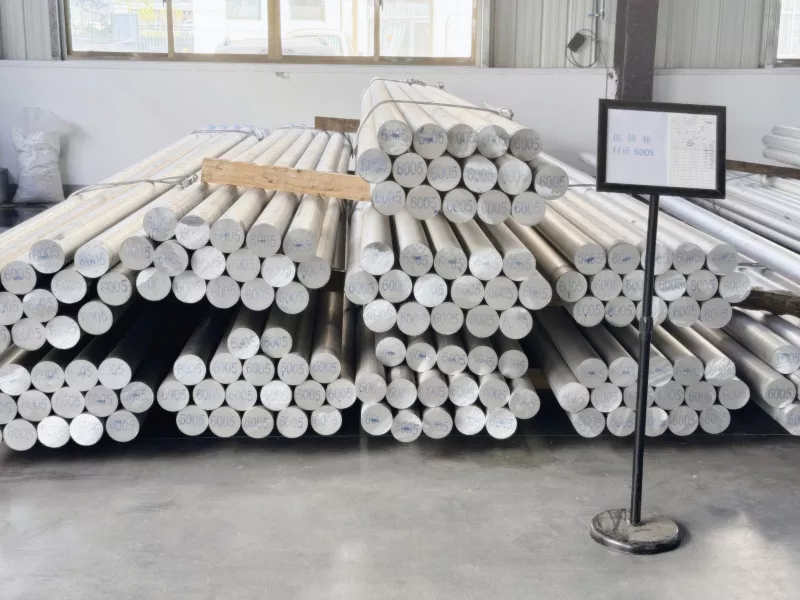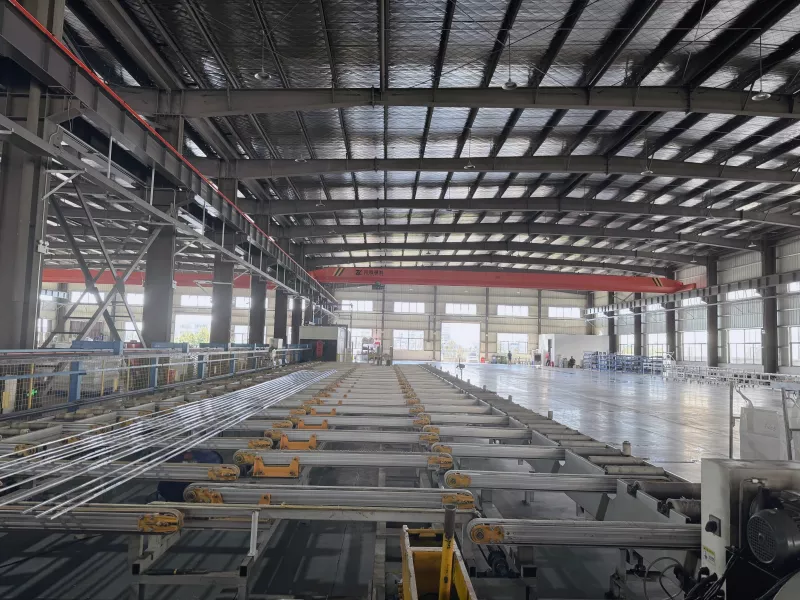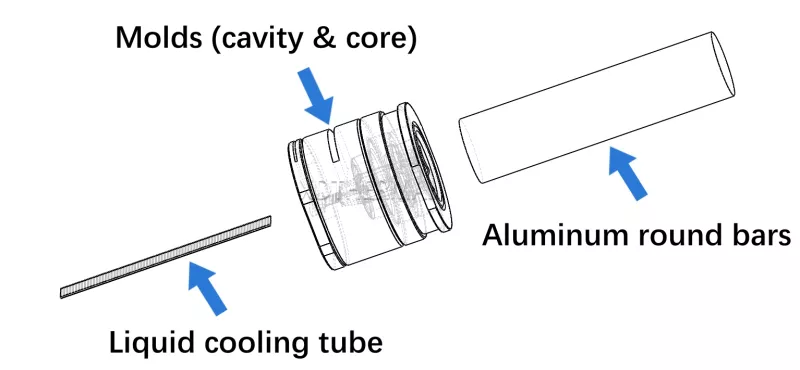In recent years, the demand for serpentine cooling tubes has grown significantly, especially in the electric vehicle (EV) industry. These tubes play a critical role in thermal management for battery packs, ensuring that lithium-ion batteries are kept at optimal temperatures to prevent overheating and improve performance. But how exactly are these essential components made? The journey of a serpentine tube begins with the aluminum extrusion process, an advanced technique that has been refined over centuries.
The manufacturing of aluminum profiles, including those used for serpentine cooling tubes, consists of several key stages. The process begins with the adjustment of the shrinkage rate. Each extrusion machine has unique characteristics that influence how much the aluminum shrinks during the process. This step requires precise calibration and testing, depending on the tonnage of the machine and the brand of equipment used.
The next step involves heating and slicing the aluminum. A round bar of aluminum, typically from the 3-series or 6-series materials, is heated to a high temperature using a furnace. The heating softens the metal, making it more malleable and ready for extrusion. Once heated, the aluminum bar is sliced into smaller sections that are suitable for the extrusion machine.

Following this, the sliced aluminum bars are transferred to the extruder using a transfer machine. This ensures that the material moves smoothly to the next stage without any delays or inefficiencies
The extrusion process has a long history, dating back to 1797 when Joseph Bramah patented the first method for manufacturing soft metal pipes. Over the years, the process has been adapted and refined for modern applications, such as the production of extruded aluminum profiles for industries ranging from construction to electric vehicles. The use of hydraulic presses has revolutionized the process, enabling the extrusion of complex shapes with high precision, which is essential in creating products like battery cooling tubes.
After the aluminum has been sliced, it needs to be efficiently transferred to the extrusion machine. This is achieved using a conveyor system, which ensures the smooth and uninterrupted movement of materials. The aluminum is prepped and positioned correctly before entering the extruder, where it will be shaped into the final profile.
Aluminum extrusion is a key part of creating serpentine tubes. Once the material enters the extruder, it is heated again to a molten state. Under immense pressure, the molten aluminum is forced through a die, which is a specialized tool that determines the cross-sectional shape of the final product. In this case, the die is designed to create the unique serpentine structure required for battery cooling applications.
Straightening is often needed after extrusion, as the high pressure used during the process can cause the product to warp or bend. A straightening machine aligns the material to meet the necessary dimensional requirements. Finally, the extruded aluminum is cut to the desired length based on the specifications of the customer or the intended use of the cooling tubes.

The quality of the raw materials used in aluminum extrusion is critical. Aluminum round bars, typically from the 3-series or 6-series materials, are selected based on their properties. 3-series aluminum is softer and more prone to impurities during the extrusion process, which can lead to defects like holes in the final product. 6-series aluminum, on the other hand, is more reliable and easier to work with, resulting in better molding and extrusion outcomes.
To further enhance quality, stripping machines can be used to remove surface impurities from the aluminum bars before they enter the extrusion process. This step is particularly important for high-performance applications like EV battery cooling tubes, where any defects in the material can lead to long-term issues with product durability.
Additionally, during the cutting process, impurities in the aluminum can be removed by discarding the heads and tails of the round bars, ensuring that only the best-quality material is used.
The mold, or die, used during extrusion is one of the most important factors in determining the success of the process. These molds are custom-made for each application, with strict tolerances and complex structures to meet the specific needs of the customer.

For products like battery cooling tubes, the mold must be carefully designed to create the intricate serpentine shape that allows for efficient thermal management in electric vehicle batteries.
Thermal management is crucial in EV batteries, as overheating can lead to reduced battery life and performance issues. Serpentine cooling tubes, made from extruded aluminum, provide an efficient solution for managing heat. The serpentine design allows for the optimal flow of coolant throughout the battery pack, ensuring that each cell remains at the ideal temperature.
The use of liquid cooling pipes is particularly effective in high-performance electric vehicles, where maintaining consistent battery temperatures is essential for both safety and efficiency. Aluminum’s excellent heat conductivity makes it the material of choice for these cooling systems.
Aluminum offers a unique combination of lightweight properties and thermal conductivity, making it the perfect material for EV battery cooling tubes. Its ability to dissipate heat quickly ensures that the battery pack remains cool, even during high-demand situations like rapid acceleration or prolonged driving.
Additionally, extruded aluminum is highly customizable, allowing manufacturers to create complex shapes like serpentine tubes that are essential for efficient thermal management.
The origins of serpentine cooling tubes lie in the sophisticated process of aluminum extrusion, which has been perfected over time to meet the growing demands of industries like electric vehicles. By combining advanced technology with high-quality materials, manufacturers are able to produce battery cooling tubes that ensure the safety and efficiency of EV battery packs.
In the future, as electric vehicles continue to evolve, the role of aluminum extrusion in thermal management systems will only become more critical. Understanding the intricacies of this process helps buyers and engineers make informed decisions when selecting cooling solutions for their products.

I've worked in battery thermal management for over 5 years, handling lots of international projects. If you're curious about battery liquid cooling products or services, feel free to ask me any questions!